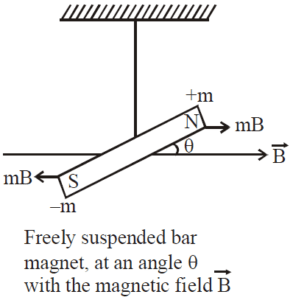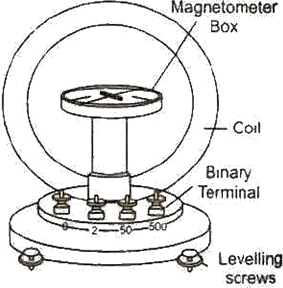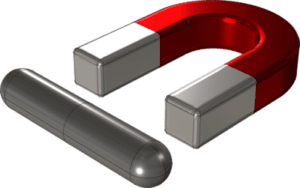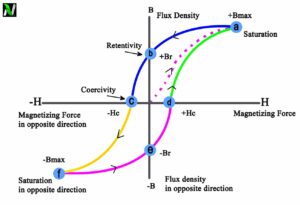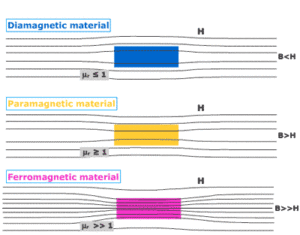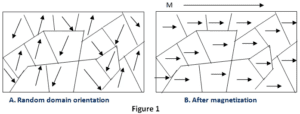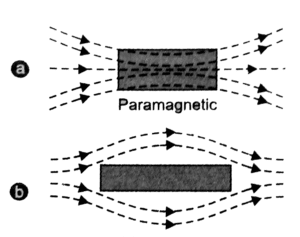Every science student knows from his tenth class that when an electric current passes through the wire, a magnetic field is produced in a plane perpendicular to the direction of the current flow. We have learned lots of things from this phenomenon and invented various applications that are based on this concept.
One of the applications which we have discovered is electromagnetic. An electromagnet is just a wire wrapped in the form of a spring closely and when an electric current is to be flown through this coil; a magnetic field is produced which is concentrated in the hollow region of the coil.
In this article, we will discuss electromagnet, its definition, properties, working, and its uses in detail, so let’s get started…
History of an electromagnet
When Hans Christian Ørsted discovered that electric currents produce magnetic fields. Four years later from this discovery, British scientist William Sturgeon invented the electromagnet in 1824. His first electromagnet was a horseshoe-shaped piece of iron wrapped in approximately 18 turns of bare copper wire (insulated wire did not yet exist). The iron has been painted to insulate it from the windings.

When a current passed through the coil, the iron would magnetize and attract other pieces of iron; when the current was cut, it lost its magnetization. The sturgeon demonstrated its power by showing that although it weighed only seven ounces (about 200 grams), it could lift nine pounds (about 4 kilograms) when current from a single cell power supply was applied.
However, Sturgeon’s magnets were weak because the uninsulated wire he used could only be wrapped in a single-spaced layer around the core, which limits the number of turns. The first major use of electromagnets was seen in telegraph sounders.
Read Also
What is an electromagnet?
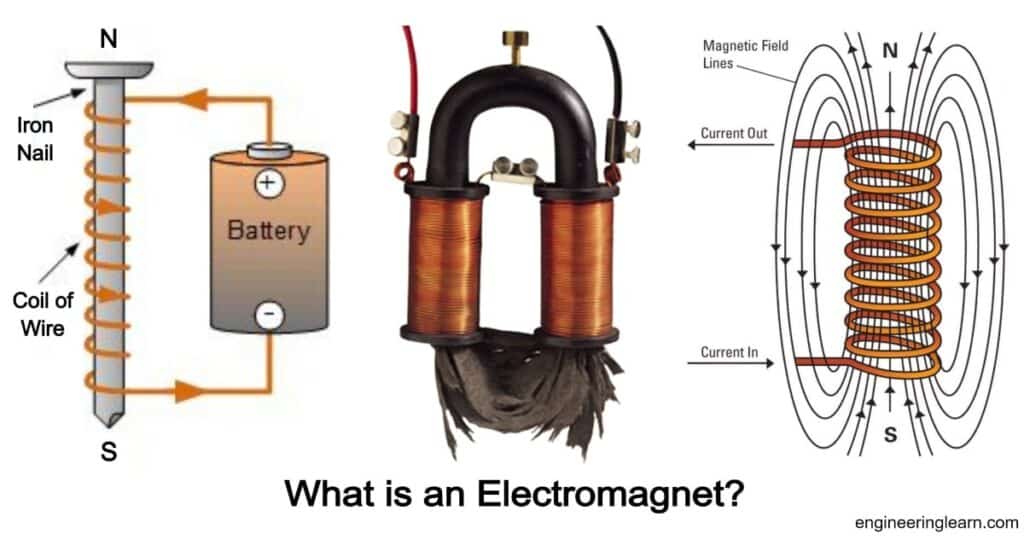
An electromagnet is a type of magnet in which the magnetic field is produced by an electric current. Electromagnets usually consist of a wire, which is wound closely like a solenoid. When an electric current passes through this coil, it produced a magnetic field that concentrates in the hollow region of the solenoid, indicating the center of the coil.
The magnetic field disappears when the current is switched off, and it appears again when the current resumes. The wire coils are often wound around a magnetic core made of a ferromagnetic or ferrimagnetic material like iron; the magnetic core concentrates the magnetic flux and creates a stronger magnet.
Read Also
- What is the difference between a permanent magnet and an electromagnet?
- Solenoid, definition, working principle, types, and applications
Working of an electromagnets
When an electric current passes through a straight wire, it creates a magnetic current around it. We can create magnetic field strength by winding the copper wire in a certain direction. If we want to increase the intensity of the magnetic field produced even further, we have to use more windings of copper wire. However, care must be taken not to wind it upside down (opposite direction) as this would cancel the effect of the previous winding.
Iron is a ferromagnetic material, each atom inside the iron acts as a natural magnet called domains, because they are in a random orientation, the effect of the small magnet cancels out. However, when the iron is wound inside the winding wire, all the small magnets inside the winding core will line up in the direction of the magnetic field. Then the effect of the electromagnet will be much stronger.
The strength of the magnetic field is also affected by the amount of current flowing through it to a saturation point where there are no atoms/ions left in the nucleus that is not aligned with the magnetic field. Also, by interrupting the current flow through an electromagnet, we can remove the effect of magnetism on the core and in the wires.
The biggest advantage of the electromagnet is that they can be polarized and changed simply by reversing the directions of the poles. This gives us the greatest advantages when building generators or electric motors.
The priority of an electromagnet can be identified here. We use the right-hand rule to do this. When we grip the ball with the thumb of the right hand, the four fingers holding the flux will indicate the direction of the current, and the thumb will indicate magnetic north. The right-hand rule will be shown next. Note that the four fingers will also indicate the direction of current in this position and the magnetic south becomes magnetic north.
Properties of electromagnet
Some properties of the electromagnet are:
- An electromagnet is temporary in nature.
- We have full control of the magnetic field generated by the electromagnet.
- An electromagnet uses a soft iron core to maximize its magnetic field.
- The magnetic field strength can be changed.
- An electromagnet can be easily demagnetized by switching off the current.
- The polarity can be reversed
Uses of electromagnets
Electromagnets are very widely used in electric and electromechanical devices, including:
- Motors and generators
- Transformers
- Electric bells and buzzers
- Loudspeakers and headphones
- Magnetic recording and data storage equipment: tape recorders, VCRs, hard disks
- MRI machines
- Scientific equipment such as mass spectrometers
- Particle accelerators
- Magnetic locks
- Magnetic separation equipment is used for separating magnetic from nonmagnetic material, for example, separating ferrous metal from other material in scrap.
- Industrial lifting magnets
- magnetic levitation, used in a maglev train or trains
- Induction heating for cooking, manufacturing, and hyperthermia therapy
Disadvantages of Electromagnetism
Some disadvantages of an electromagnet are:
- It heats up very quickly.
- Consumes lots of electrical energy.
- It can store large amounts of energy in its magnetic field. If the electric current stops, the energy will discharge.
Watch this video for more reference.
Stay tuned with Laws Of Nature for more useful and interesting content.

